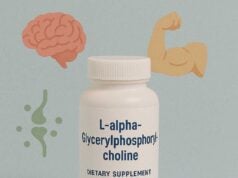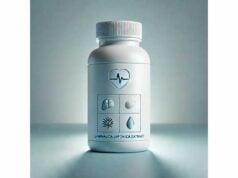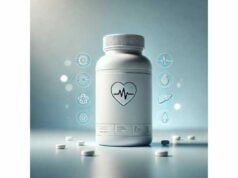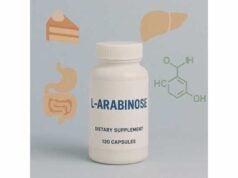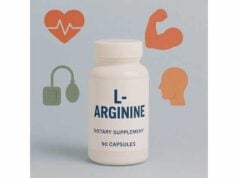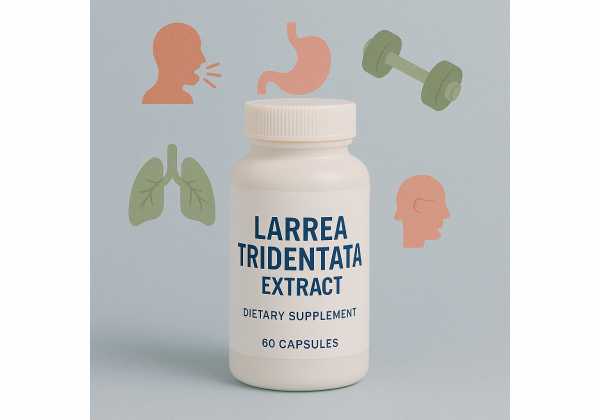
Larrea tridentata—better known as creosote bush or chaparral—is a hardy desert shrub long used in folk medicine of the American Southwest and northern Mexico. Modern extracts typically concentrate resinous compounds such as nordihydroguaiaretic acid (NDGA), lignans, and flavonoids that show strong antioxidant, antimicrobial, and enzyme-modulating effects in laboratory models. Interest in Larrea centers on possible roles in metabolic health, skin concerns, and infection control. Yet the same chemistry that makes its extracts bioactive also raises safety concerns: NDGA can form reactive quinones and has been linked to liver and kidney injury in susceptible people. This article cuts through the confusion with a clear, people-first guide: what Larrea extract is, where it may (and may not) help, how it’s used in real-world products, what a practical “dosage” conversation looks like, and who should avoid it entirely. You’ll also see a plain-language summary of the clinical and preclinical evidence so you can weigh potential benefits against risks with a cool head.
Key Insights
- Lab and animal research suggests NDGA-rich Larrea extract may modulate lipids and inflammation; human evidence remains limited.
- Safety is the major limiter: oral products have been associated with rare but serious liver injury in case reports.
- No established therapeutic dose; if used traditionally, tea is typically 1 cup (≈240 mL) daily for ≤7–14 days, not chronic.
- Avoid entirely if you have liver or kidney disease, are pregnant or breastfeeding, or take hepatotoxic medications.
Table of Contents
- What is Larrea tridentata extract?
- Does it actually work? Benefits with realistic expectations
- How people use it: forms, quality, and practical tips
- Dosage and timing: what is actually sensible?
- Side effects, interactions, and who should avoid it
- Evidence at a glance: what studies show
What is Larrea tridentata extract?
Larrea tridentata is the evergreen “creosote bush” that dominates many Mojave, Sonoran, and Chihuahuan desert landscapes. Herbal products labeled “chaparral” or “creosote bush” are typically derived from the plant’s leaves and young stems. Two broad categories of preparations exist:
- Traditional aqueous tea (infusion/decoction): Leaf material steeped in hot water. This water-based method extracts fewer resinous compounds, including relatively low amounts of NDGA.
- Modern concentrated extracts: Hydroalcoholic or solvent extracts, standardized or enriched in NDGA and related lignans (e.g., mesquitol derivatives), plus phenolic acids and flavonoids. These deliver far higher doses of lipophilic constituents than tea.
Why NDGA matters. NDGA is a potent antioxidant and enzyme modulator. In vitro, it can inhibit lipoxygenases and influence signaling pathways tied to oxidative stress, inflammation, and lipid handling. That “power” goes both ways: NDGA readily auto-oxidizes to quinone species that can deplete glutathione and form adducts with proteins and DNA. The same reactivity that quells radicals can—at higher exposures or in susceptible individuals—tip toward toxicity. Understanding this duality is key to safe decision-making.
How Larrea products are marketed. You’ll find Larrea in capsules, tinctures, topical salves, and occasionally as bulk herb for tea. Labels often promise “detox,” “immune,” or “metabolic” support. These claims are not substantiated by robust human trials, and quality varies widely. Some products are standardized to a percent NDGA; many are not, making dose comparisons difficult.
Botanical identity matters. Larrea species and even harvest timing influence NDGA content. Desert stresses (heat, drought, UV) can increase resin production, which can raise NDGA levels. Without transparent sourcing and testing, two “500 mg” capsules may deliver very different chemistries.
Bottom line. Larrea extract is chemically potent, with NDGA as a headline compound. That potency drives intriguing lab signals and the majority of safety concerns. Anyone considering Larrea should prioritize preparation type, standardization, and safety over marketing language.
Does it actually work? Benefits with realistic expectations
Metabolic health (lipids, liver fat, insulin). In animal models of diet-induced obesity and fatty liver, NDGA-rich Larrea extracts have repeatedly improved blood lipids, reduced hepatic triglycerides, and dialed up pathways for fatty-acid oxidation. Mechanistically, NDGA can activate antioxidant defenses (e.g., NRF2 signaling), inhibit lipoxygenases that shape inflammatory cascades, and influence transcription factors involved in lipid metabolism. These effects are internally consistent across cell and rodent data and point toward improved lipid handling and reduced oxidative stress in the liver. However, these are preclinical findings. Translating rodent improvements in steatosis or fibrosis to human outcomes requires controlled clinical trials—still lacking.
Antiviral and antimicrobial activity. NDGA and Larrea extracts show in-vitro inhibitory effects against a range of viruses (e.g., flaviviruses, herpesviruses) and bacteria or fungi. These data are encouraging for hypothesis-building, but they do not prove clinical utility. In vitro concentrations that stop a virus in a petri dish may not be achievable—or safe—in human tissues. Without dose-finding, pharmacokinetics, and clinical endpoints, antiviral claims remain preliminary.
Antioxidant and anti-inflammatory effects. NDGA’s catechol rings scavenge multiple reactive oxygen species. At low concentrations, that can shift the cellular redox set point toward protection, dampening inflammatory signaling and potentially benefiting conditions where oxidative stress is a driver. At higher concentrations, the same chemistry increases oxidative burden via redox cycling. This biphasic “hormetic” pattern—helpful at low dose, harmful at high—demands caution with concentrated extracts.
Skin and topical uses. Historically, Larrea poultices and salves were used for minor skin irritation, sores, and arthritic discomfort. Modern topicals pair Larrea resin with emollients. Because topical delivery limits systemic absorption, many people find it a pragmatic way to test personal tolerance. Even so, sensitization and contact dermatitis can occur, especially with resin-rich products.
Cancer, detox, and sweeping wellness claims. You’ll encounter expansive marketing—“detoxifies,” “fights cancer,” “boosts immunity.” These claims outpace the evidence. While NDGA-derived compounds have been explored as drug leads, ethical medical advice must stay tethered to clinical data: there are no high-quality randomized trials showing Larrea extract improves survival or cures disease. For “detox,” the term has no standard medical meaning in this context.
Net takeaway on efficacy. Larrea offers plausible mechanisms and strong preclinical signals in metabolism and redox biology, plus antiviral activity in vitro. But human evidence is limited. If you value a high evidence bar—especially for systemic (oral) use—Larrea should sit in the “interesting but unproven” category, with safety as the deciding factor.
How people use it: forms, quality, and practical tips
Forms you’ll see:
- Capsules/tablets: Dried leaf powder or concentrated extracts. Some list “NDGA content,” many do not. Dose per capsule commonly ranges from 250–550 mg of plant material, but the NDGA yield can vary several-fold.
- Tinctures: Hydroalcoholic extracts measured by dropper. Potency depends on herb-to-solvent ratio and extraction solvent; alcohol extracts usually deliver more NDGA than teas.
- Topical salves/creams: Larrea resin in an emollient base for skin use.
- Tea (infusion/decoction): Lower-NDGA aqueous preparation, historically used in some communities.
Quality considerations that matter more than the label art:
- Identity testing: Products should verify Larrea species and absence of adulterants. Look for third-party testing or transparent certificates of analysis.
- NDGA specification: Because NDGA largely drives both activity and risk, products that quantify NDGA help you compare exposure. Absence of this data is a red flag for oral use.
- Solvent history: Hydroalcoholic extractions concentrate resin; teas do not. If you’re risk-averse, formulations that limit NDGA exposure (or avoid it altogether) make more sense.
- Contaminants: Desert shrubs can accumulate environmental contaminants. Reputable brands test for heavy metals, pesticides, and residual solvents.
Practical usage patterns:
- Topical first: Many cautious users start with a small-area topical application 1–2 times daily for a week to assess for sensitivity. If redness, itching, or rash occurs, discontinue.
- If someone considers tea despite risks: Some traditions use 1 cup (≈240 mL) once daily for no longer than 1–2 weeks, then stop. This minimizes cumulative NDGA exposure versus capsules or tinctures. Even this conservative pattern is not risk-free and is not a recommendation—only a description of common practice.
- Oral extracts: Because concentrated extracts can deliver high NDGA, a safety-first approach is to avoid them unless you are working with a knowledgeable clinician and have a concrete monitoring plan.
Monitoring if you insist on oral use (risk-mitigation, not endorsement):
- Baseline and follow-up labs: ALT, AST, bilirubin, alkaline phosphatase at baseline and within 2–4 weeks; stop immediately if abnormal.
- Medication review: Extra caution if you take drugs with known liver or kidney toxicity.
- Stop rules: Any jaundice, dark urine, severe fatigue, right-upper-quadrant pain, or unexplained nausea—stop and seek medical care.
A note on sustainability and ethics. Larrea is abundant, but wild-harvesting should still be responsible. Prefer brands that disclose sourcing and comply with fair-harvest practices.
Dosage and timing: what is actually sensible?
There is no authoritative, standardized therapeutic dose for Larrea tridentata extract. Unlike vitamins or well-studied botanicals, Larrea lacks dose-finding trials that tie a specific amount to a clinically meaningful benefit while confirming safety. Instead, we have a patchwork: traditional practices, variable commercial products, and preclinical dosing that doesn’t translate cleanly to humans.
A conservative, safety-first framework:
- Oral use is generally discouraged due to rare but documented cases of serious liver injury linked to chaparral products. When benefits are unproven and risks include organ damage, the rational default is to avoid oral Larrea.
- If someone nevertheless uses it, traditional tea is the option with the lowest NDGA exposure. A practical pattern described in folk use is 1 cup (≈240 mL) once daily for up to 7–14 days, then stop. Do not treat this as a “course” to repeat monthly; do not combine with alcohol or hepatotoxic medications. This is a risk-reduction stance, not a medical endorsement.
- Capsules/tinctures: Because NDGA yield is seldom disclosed and can be high, avoid unless a product provides rigorous NDGA quantification and a clinician is monitoring you.
Timing with meals. If tea is used, take with food to minimize GI upset. Hydration helps if you’re sensitive to tannin-like astringency.
Stacking and combinations. Do not stack Larrea with other botanicals known to stress the liver (e.g., kava, comfrey, high-dose green tea extracts) or drugs that rely on hepatic metabolism, unless your clinician explicitly approves and monitors.
Who might consider topical use. For minor, self-limited skin complaints, some people trial a Larrea-containing salve 1–2 times daily on small areas for a few days. If irritation occurs, stop. Do not apply to broken skin, surgical wounds, or large body areas, and avoid occlusive dressings that increase absorption.
Why “low and short” matters. NDGA’s chemistry is dose- and time-dependent: short, low-exposure periods reduce the chance of pushing a helpful antioxidant effect into a harmful pro-oxidant, quinone-forming state. Because individual susceptibility varies (genetics, glutathione status, concurrent medications), there is no one “safe” dose for everyone.
Children, pregnancy, lactation. Absence of safety data, plus plausible toxicity mechanisms, makes Larrea off-limits for these groups.
In summary. There isn’t a scientifically validated oral dose; the safest “dose” for oral Larrea is none. If someone uses it against this advice, they should favor low-NDGA tea, limit duration, and monitor closely.
Side effects, interactions, and who should avoid it
Liver injury (hepatotoxicity). The most serious concern tied to chaparral products is acute liver injury presenting with nausea, fatigue, jaundice, and markedly elevated aminotransferases. Onset has ranged from weeks to months after starting daily ingestion. While uncommon, severe cases, including acute liver failure and the need for transplant, have been reported. Mechanisms likely involve NDGA oxidation to reactive quinones, glutathione depletion, and idiosyncratic immune-mediated responses.
Kidney injury (nephrotoxicity). High NDGA exposures in animals produce renal cystic changes and tubular injury. Human case reports associate heavy chaparral intake with cystic renal disease in rare instances. People with chronic kidney disease should avoid Larrea entirely.
Gastrointestinal effects. Nausea, cramping, or diarrhea can occur, particularly with concentrated extracts. Bitterness and a resinous aftertaste are common.
Allergy and skin reactions. As a resinous plant, Larrea can trigger contact dermatitis or photosensitization in susceptible individuals. Patch-test a small area first when using topicals.
Potential interactions. Larrea may inhibit or induce metabolic enzymes in vitro; NDGA also interacts with redox-sensitive signaling. Practical implications are unclear but warrant caution:
- Alcohol, acetaminophen, and other hepatotoxins: Additive risk for liver injury.
- Drugs with narrow therapeutic windows processed by the liver: Theoretical interaction risk (e.g., some statins, antiepileptics); avoid unless your prescriber agrees and monitors.
- Antioxidant stacking: High antioxidant stacks around the time of chemotherapy, radiation, or certain targeted therapies should be managed by oncology teams, not self-directed.
Absolute avoid list:
- Existing liver disease, abnormal liver tests, or past drug-induced liver injury.
- Chronic kidney disease or history of renal cystic disease.
- Pregnancy or breastfeeding.
- Age under 18.
- Concurrent use of hepatotoxic drugs or heavy alcohol consumption.
- Planned major surgery (stop all nonessential supplements at least 2 weeks prior unless your surgical team advises otherwise).
What to do if symptoms appear. Stop Larrea immediately and seek medical evaluation if you develop yellowing of eyes/skin, dark urine, pale stools, intense fatigue, right-upper-quadrant pain, severe nausea/vomiting, or unexplained itching.
Regulatory perspective. Over-the-counter chaparral products remain available, but advisory bodies have documented cases of hepatotoxicity and highlighted lack of proven efficacy. That asymmetry—limited benefit signals vs nontrivial risk—should guide prudent use.
Evidence at a glance: what studies show
Where the signal is strongest (preclinical):
- Metabolic/liver: Multiple rodent studies report that NDGA lowers triglycerides, improves insulin sensitivity, and reduces hepatic steatosis and fibrosis markers. Mechanisms include lipoxygenase inhibition, NRF2-linked antioxidant responses, and up-regulation of fatty-acid oxidation pathways. These data form the backbone of modern metabolic claims for Larrea.
- Antiviral: NDGA has demonstrated in-vitro inhibition of several viruses, including coronaviruses and flaviviruses, at micromolar concentrations that were non-toxic to test cell lines. This suggests a potential entry or replication blockade, but it does not establish clinical efficacy in humans.
Human data: thin and mixed.
- Legacy case series and observational reports on chaparral show safety problems rather than benefits. Reports of hepatotoxicity—albeit rare relative to total use—are serious enough to shape modern caution.
- Clinical trials are scarce. There are no large, well-controlled trials demonstrating that oral Larrea extract improves hard clinical outcomes in metabolic disease, infections, or cancer. A small oncology-related exploration with an NDGA-derived compound is not equivalent to endorsing chaparral supplements.
Safety literature:
- Hepatic risk: Case reports and pharmacovigilance summaries link chaparral ingestion to acute hepatitis and, in some instances, fulminant liver failure. The pattern is typically hepatocellular with very high ALT/AST. Latency ranges from a few weeks to months.
- Renal risk: Decades of toxicology experiments in animals connect high NDGA intake to cystic kidney changes, with rare human correlates in heavy consumers.
How to read this evidence as a consumer or clinician:
- Efficacy: Preclinical promise ≠ clinical proof. Until dose, formulation, and outcome-specific human trials are done, systemic benefits remain speculative.
- Safety: The plausible mechanism for harm, plus documented cases, shifts the default stance to caution, especially for oral products with unknown NDGA content.
- Risk-benefit balance: If your goal is metabolic health or skin comfort, safer, better-studied alternatives exist (dietary patterns, exercise, topical agents with established profiles). Larrea may be best reserved for research settings or very cautious, short-term traditional tea use with monitoring.
Pragmatic decision rule: If you cannot verify NDGA content and do not have a monitoring plan, do not take oral Larrea. For most people, the marginal, unproven upside does not justify the downside risk.
References
- Chaparral – LiverTox – NCBI Bookshelf 2022 (Guideline)
- Nordihydroguaiaretic Acid: From Herbal Medicine to Clinical Development for Cancer and Chronic Diseases – PMC 2020 (Systematic Review)
- Creosote bush-derived NDGA attenuates molecular and pathological changes in a novel mouse model of non-alcoholic steatohepatitis (NASH) – PMC 2019 (Preclinical Study)
- In Vitro Antiviral Activity of Nordihydroguaiaretic Acid against SARS-CoV-2 – PMC 2023 (In Vitro Study)
- Prototype Focused Monograph: Review of Liver-Related Risks for Chaparral – Dietary Supplements – NCBI Bookshelf 2004 (Monograph)
Disclaimer
This article is for general information and education. It does not replace personalized medical advice, diagnosis, or treatment. Do not start, stop, or change any medication or supplement without discussing it with your licensed healthcare professional, especially if you have liver or kidney disease, are pregnant or breastfeeding, or take prescription drugs. If you experience symptoms suggestive of liver or kidney injury while using any supplement, stop immediately and seek medical care.
If you found this guide useful, please consider sharing it on Facebook, X (formerly Twitter), or your favorite platform, and follow us for more clear, evidence-informed health writing. Your support helps us keep producing high-quality content.

